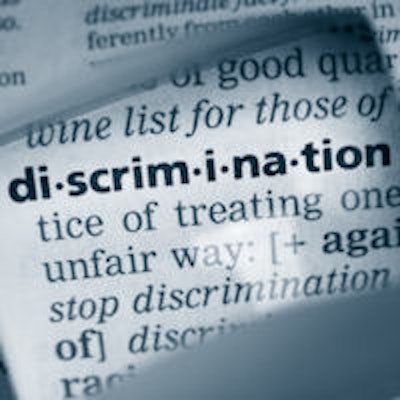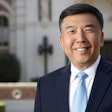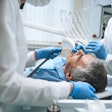
An internal review committee at the University of Colorado (CU) has found several critical issues regarding how racial-ethnic minority students and other underrepresented groups are treated in the School of Dental Medicine (SDM), and wrote in its final report that these findings "warrant immediate attention."
In August 2013, the CU Chancellor Donald Elliman received a request for an external institutional review of the climate for students and faculty of color at the dental school. The request was signed by graduates of the dental school, faculty members, and local dentists, according to the report. Elliman agreed that a review was needed but conducted an internal review instead.
Brenda J. Allen, PhD, the associate vice chancellor for diversity and inclusion for the University of Colorado Denver, was assigned to lead the internal review committee, which also included Steven Lowenstein, MD, MPH, the associate dean for faculty affairs at the university's School of Medicine; Dayna Bowen Matthew, JD, a law professor at the University of Colorado Boulder and the Center for Bioethics & Humanities; and Gerald J. Perry, director of the Health Sciences Library at the Anschutz Medical Campus.
“Students of color experience routine, ongoing discrimination in the school, to the extent that potential applicants are being dissuaded from considering the school as an option.”
The committee reviewed relevant literature about diversity in dental education and acquired related data and information about the dental school. The members conducted interviews with approximately 40 individuals, including some of those who requested the review, as well as dental school leaders, alumni, and students of color. Allen also met with leaders of the National Association for the Advancement of Colored People (NAACP) and the Denver Urban League, who expressed their concerns about the school's climate for African-American students. In addition, the committee reviewed data from the February 2014 Student Climate Survey, which included responses from 175 CU dental students, or 44% of the student body.
The committee's analysis found "several critical themes related to the dental school's climate for underrepresented racial-ethnic minority students, as well as students from other groups," including women, foreign nationals, persons who have low socioeconomic status, persons with strong religion beliefs, and lesbian, gay, bisexual, transgender, queer (LGBTQ) individuals, according to the report.
"We discerned themes of perceptions and practices that can have a negative impact on students' educational experiences as well as on the overall climate of diversity and inclusion within an institution," the committee members wrote. "We focused on the potential for negative impact due to perceptions related to the school's climate, based on the premise that perception matters."
Findings
The review found an "unwelcoming climate" for minority students and other underrepresented groups, with the following themes:
- A general perception that the school's climate is especially adverse to African Americans, which may be so pervasive as to have impacted the dental school's reputation
- A context in which behaviors often communicate negative or derogatory attributions to members of underrepresented groups
- A perception that underrepresented minority students are admitted only because of their race and, therefore, are not qualified to be in the program
- Possible "profiling" of male students of color in campus facilities
- A strong reticence among students to report discriminatory attitudes or actions by students, faculty, or staff
The committee also received comments from alumni of color who practice in the community, as well as other African-American dentists and community members. These comments expressed that many Denver metropolitan community members have negative perceptions of the school's climate. "Another recurring sentiment is that students of color experience routine, ongoing discrimination in the school, to the extent that potential applicants are being dissuaded from considering the school as an option," the report noted.
The authors wrote that the interviews with students of color revealed "occurrences of microaggressions -- 'brief and commonplace daily, verbal, behavioral, or environmental indignities, whether intentional or unintentional, that communicate hostile, derogatory, or negative slights and insults toward members of oppressed groups.' " They noted that these exchanges "can imply negative characteristics of individuals and groups, such as inferiority and incompetence."
Below are some examples of comments, exchanges, and incidents that the committee received:
There is preferential treatment for certain students, especially white males, and that white students have more frequent and better access to some faculty than students of color. One African-American graduate reported some faculty members would give white peers 15- to 20-minute debriefings during clinics, but only offered cursory comments to the former student.
There were reports of experiences of students of colors who were not allowed to provide their accounts of incidents that resulted in sanctions against them. One international student described two incidents in which faculty members took the word of white students about disagreements without asking for his account.
Students interviewed reported hearing faculty make negative comments about and to students of color. In the Student Climate Survey, 11% of students reported witnessing faculty making "disparaging remarks about or exhibiting hostile behaviors toward people from racial or ethnic minority groups," while 24% reported students engaging in such behaviors, the report noted.
Male students of color reported being asked by security personnel, staff, or other students to provide proof of their university affiliation upon entering campus buildings and facilities. "These types of experiences can further demoralize and stigmatize underrepresented students," the review committee members wrote. "They indicate a strong need for training in cultural awareness for all faculty, staff, and students in the university."
International students reported that some peers and faculty referred to them using "pejorative" comments and questioned their capabilities and cultural practices. Some students also said that faculty sometimes referred to or interacted with international students in "demeaning ways."
Findings 'warrant immediate attention'
The review findings "warrant immediate attention," the committee wrote. "We believe it is imperative for the school and yniversity administration to address the findings in this report, not only for members of underrepresented groups, but so that all students will have the benefit of an inclusive institutional climate that will enhance their education and help prepare them for healthcare careers in an increasingly diverse world, and so that all SDM faculty, staff, and patients will feel valued and respected."
The committee also outlined action items related to endorsement from leadership, resources, and strategic planning that are "fundamental and critical first-steps" in its report. It recommended broad and consistent messages from leadership to students, staff, and faculty about the school's commitment to diversity, and also to explicitly explain and reinforce why diversity matters to the school and dentistry.
In addition, the committee recommended acquiring "substantial" resources to fund scholarships for students from underrepresented minority groups, minority faculty recruitment, pipeline programs, professional development for faculty and staff, and the personnel needed to support and sustain the school's diversity and inclusion commitments. It also noted that resources need to be utilized to assess and revise the curriculum to "address diversity and inclusion concerns and disparities in oral health."
Regarding strategic planning, the committed advised developing and implementing a comprehensive diversity and inclusion strategic plan for the dental school, with input from diverse stakeholders and provisions for ongoing accountability. "The plan should also be evidence-based and consistent with ADA and CODA [Commission on Dental Accreditation] standards," the report stated.
The committee also included a set of objectives for the school:
- Increase the number of underrepresented minority students, faculty, and staff.
- Promote the advancement and success of underrepresented minority students, faculty, and staff.
- Enhance diversity instruction in the curriculum.
- Proactively promote a school-wide climate that values diversity, inclusion, respect, mutual trust, and understanding.
The full report details the action steps the committee recommended to meet these objectives.
A blueprint for change
The recommendations provide a blueprint for the dental school to address the university's strategic priority "to enhance diversity university-side and foster a culture of inclusion," wrote the committee, referencing the University of Colorado Denver's Strategic Plan 2008-2020.
"We urge administrators, faculty, and staff throughout the school, at all levels, to take responsibility for pursuing the diversity and inclusion goals that are essential for achieving excellence in education, research, community service, and patient care," the committee members concluded. "In order to succeed, the School of Dental Medicine must place diversity and inclusion, and building a climate of compassion, trust, and respect, at the top of its organization agenda. In doing so, the school can become a model for other schools of dental medicine in the United States."



















